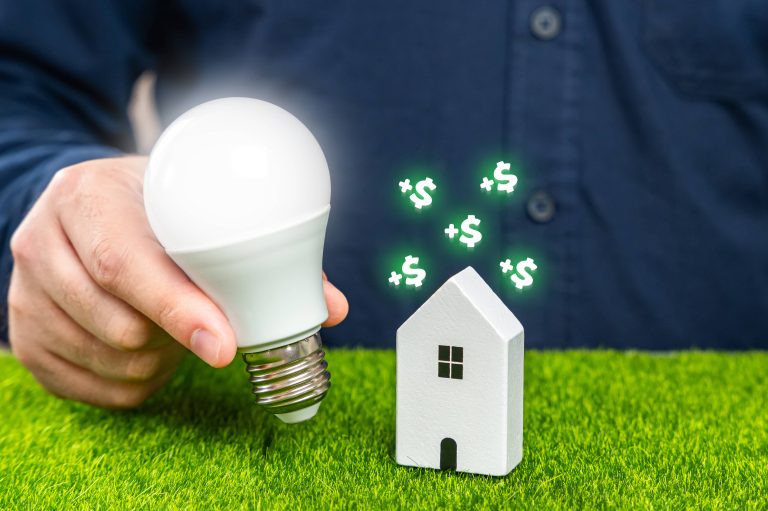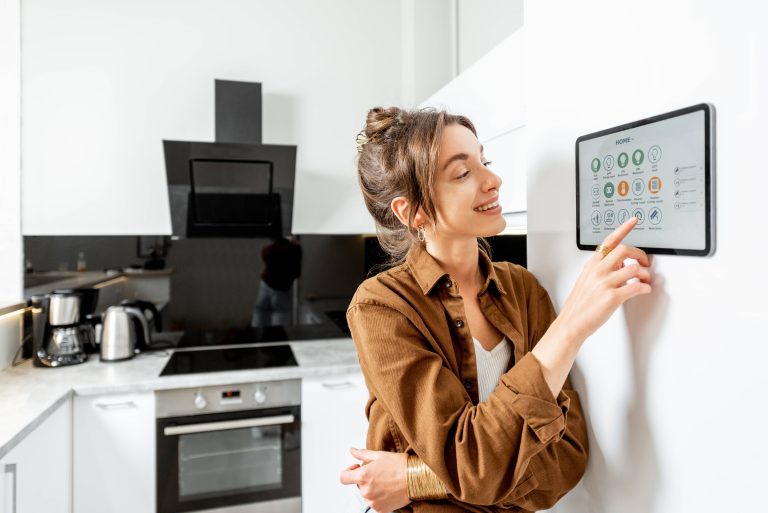
In today’s fast-paced world, where technology is advancing at breakneck speed, the concept of a smart home has transcended beyond just convenience and luxury. With increasing awareness around energy efficiency and sustainability, a new trend is emerging: the self-sustaining smart home. Imagine a home that not only listens to your commands and learns your preferences, but also operates with minimal impact on the environment. This blend of intelligent design and eco-friendly practices is the future of smart living. In this post, we’ll explore how you can transform your home into a self-sustaining powerhouse of tech and sustainability.
1. Harness the Power of Renewable Energy
The first step towards a self-sustaining smart home is to integrate renewable energy sources. Solar panels are a popular and effective choice, transforming sunlight into electricity. Today’s solar technology is more efficient and affordable than ever, making it accessible for many households. Depending on your location and the orientation of your house, you may also consider wind turbines or geothermal energy systems. The key is to analyze which renewable source will be most effective for your environment.
Once your renewable system is in place, use smart energy management tools to optimize its use. Smart inverters, energy dashboards, and home batteries like the Tesla Powerwall allow you to store energy, track consumption, and even sell excess electricity back to the grid.
2. Smart Energy Management
A smart home thrives on efficiency. Smart thermostats like the Nest or Ecobee are at the forefront of managing energy consumption effectively. These devices use learning algorithms to adapt to your schedule, ensuring your home is comfortable without wasting energy. They provide real-time data and insights, helping you to adjust settings for maximum efficiency.
Smart plugs and lightbulbs are also critical in reducing unnecessary energy consumption. These can be controlled remotely via your smartphone or set on schedules, ensuring devices and lights are off when not in use. Additionally, advanced smart power strips detect idle electronics and cut off power to eliminate phantom loads.
3. Water Conservation Systems
Water scarcity is a growing concern globally, and a self-sustaining home should incorporate water conservation methods. Smart irrigation systems and rainwater harvesting can significantly reduce water usage. Smart sprinklers adjust based on weather forecasts and soil moisture, optimizing water usage for your garden.
Inside the home, products like low-flow showerheads, smart leak detectors, and efficient dishwashers help to minimize water consumption. Moreover, integrating a greywater recycling system can further contribute to sustainability by reusing water from sinks and showers for irrigation.
4. Sustainable Materials and Design
A sustainable smart home is not just about technology; it’s also about the materials and design principles you choose. Opt for sustainable building materials such as bamboo flooring, recycled steel, and reclaimed wood. Insulate your home using eco-friendly materials like sheep’s wool or cellulose to maintain temperatures without excessive heating or cooling.
Embrace passive solar design by strategically placing windows and selecting appropriate window treatments. This design principle maximizes natural light and heat in colder months and minimizes heat in warmer months, reducing the need for artificial heating and cooling.
5. Integrate a Sustainable Food Source
A truly self-sustaining home doesn’t rely on external sources for basic needs. Consider incorporating a small-scale food production system, like a hydroponic or aquaponic garden. These systems allow you to grow vegetables and herbs year-round, regardless of climate, in a compact space.
Vertical gardens and edible landscaping are also excellent ways to use your outdoor space efficiently. By integrating these systems with smart gardening apps, you can monitor growth conditions, track plant health, and automate feeding schedules to ensure a thriving home-grown food supply.
6. Waste Management and Recycling
A comprehensive waste management system is integral to sustainability. Implement composting systems for organic waste and recycling stations for other materials. Smart waste bins can play a role in this by providing alerts when they’re full, or even serving as sorting assistants, helping you ensure that waste is categorized correctly.
Additionally, be conscious of the materials used in gadgets and appliances. Opt for those that are made from recyclable components and offer take-back programs for end-of-life devices.
7. Connectivity and Artificial Intelligence
For a smart home to be truly effective and sustainable, it requires seamless connectivity and intelligent automation. Invest in a robust home network and consider a central hub for controlling all devices. Platforms like Google Assistant, Amazon Alexa, or Apple’s HomeKit provide interoperability across various devices, making the smart home experience cohesive and intuitive.
Moreover, leveraging Artificial Intelligence (AI) can further enhance sustainability. AI can predict energy needs, suggest changes based on historical data, and even manage resources dynamically. This leads to optimized operations and reduced energy consumption, aligning with sustainability goals.
Conclusion
Building a self-sustaining smart home is not just a step towards reducing your ecological footprint but also a way to future-proof your lifestyle against energy crises and resource shortages. By blending renewable technologies with smart systems, you create a home that not only meets your needs but also contributes to the health of our planet.
As we continue to advance technologically, the opportunity for creating such eco-friendly living spaces is greater than ever before. It demands an investment in time, resources, and a commitment to sustainable living, but the payoff, both personally and globally, is invaluable. Design your home today to be a beacon for tomorrow’s sustainable and technologically integrated world.







